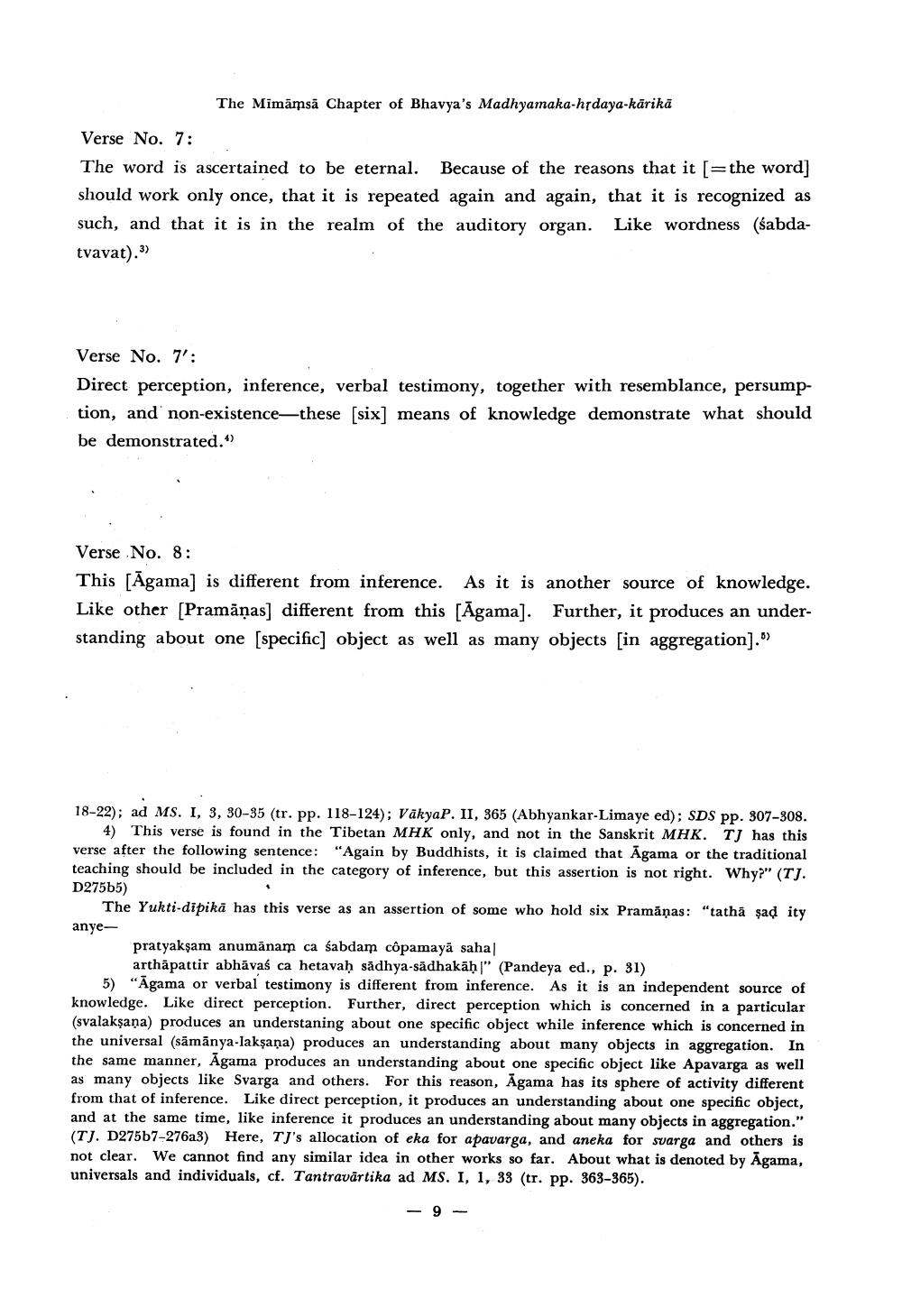Book Title: Mimansa Chapter Of Bhavyas Madhyamaka Hrdaya Karika Author(s): Shinjo Kawasaki Publisher: Shinjo Kawasaki View full book textPage 9
________________ The Mimamsa Chapter of Bhavya's Madhyamaka-hrdaya-kärikā Verse No. 7: The word is ascertained to be eternal. Because of the reasons that it (=the word] should work only once, that it is repeated again and again, that it is recognized as such, and that it is in the realm of the auditory organ. Like wordness (sabdatvavat).) Verse No. 7': Direct perception, inference, verbal testimony, together with resemblance, persumption, and non-existence—these [six] means of knowledge demonstrate what should be demonstrated." Verse No. 8: This [Āgama) is different from inference. As it is another source of knowledge. Like other [Pramāņas) different from this [Āgama). Further, it produces an understanding about one [specific] object as well as many objects [in aggregation]." 18-22); ad MS. I, 3, 30-35 (tr. pp. 118-124); VākyaP. II, 365 (Abhyankar-Limaye ed); SDS pp. 307-308. 4) This verse is found in the Tibetan MHK only, and not in the Sanskrit MHK. TJ has this verse after the following sentence: "Again by Buddhists, it is claimed that Agama or the traditional teaching should be included in the category of inference, but this assertion is not right. Why?" (TJ. D275b5) The Yukti-dipikā has this verse as an assertion of some who hold six Pramāņas: "tathā şad ity anye pratyakşam anumanam ca sabdam côpamaya sahal arthāpattir abhāvaś ca hetavah sādhya-sadhakāh" (Pandeya ed., p. 81) 5) "Āgama or verbal testimony is different from inference. As it is an independent source of knowledge. Like direct perception. Further, direct perception which is concerned in a particular (svalaksana) produces an understaning about one specific object while inference which is concerned in the universal (sāmānya-lakşaņa) produces an understanding about many objects in aggregation. In the same manner, Agama produces an understanding about one specific object like Apavarga as well as many objects like Svarga and others. For this reason, Agama has its sphere of activity different from that of inference. Like direct perception, it produces an understanding about one specific object, and at the same time, like inference it produces an understanding about many objects in aggregation." (TJ. D275b7-276a3) Here, TJ's allocation of eka for a pavarga, and aneka for svarga and others is not clear. We cannot find any similar idea in other works so far. About what is denoted by Agama, universals and individuals, cf. Tantravārtika ad MS. I, 1, 33 (tr. pp. 363-365). - 9 -Page Navigation
1 ... 7 8 9 10 11 12 13 14 15 16 17 18 19
